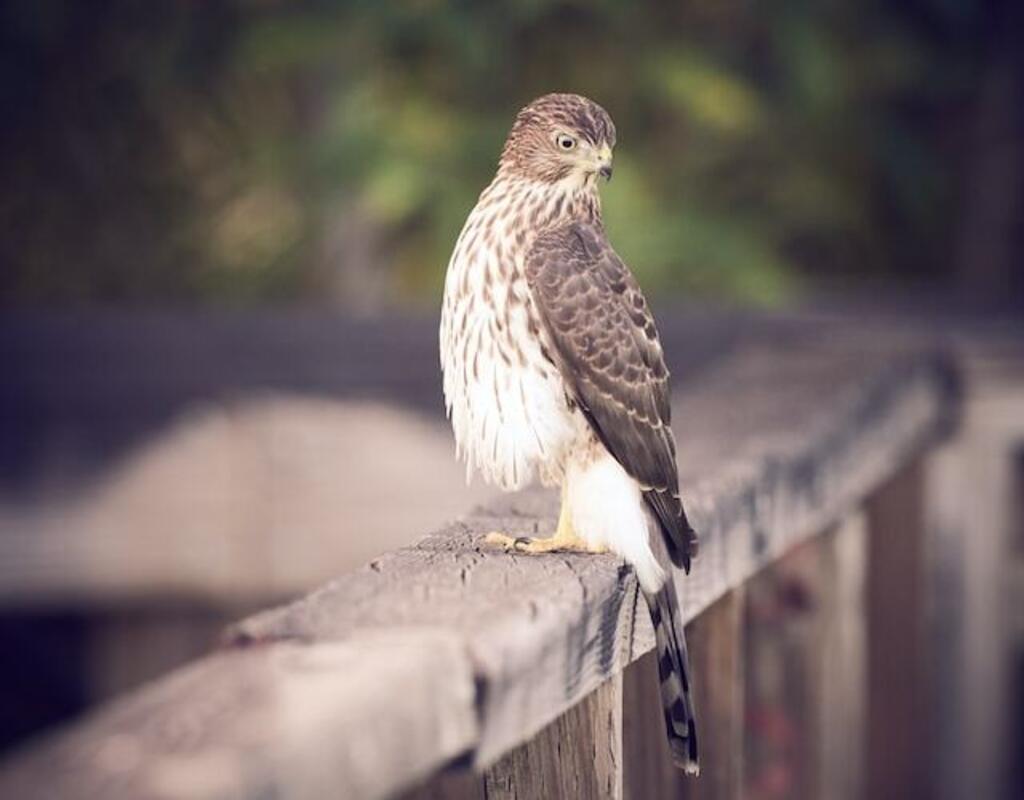Which Hawks Migrate? Exploring Nature’s Avian Nomads. Join us on an awe-inspiring journey as we unravel the secrets of hawk migration, a remarkable phenomenon that has captivated scientists and bird enthusiasts for centuries.
Discover the fascinating reasons behind their annual journeys, from seeking abundant food sources to finding ideal breeding grounds.
From soaring high in the sky to following well-defined routes, these majestic birds of prey showcase their impressive flights and navigate through changing seasons.
Let’s delve into the captivating world of migrating hawks and witness their extraordinary feats.
Table of Contents
Key Takeaways
- Migration is observed in many species of hawks, with some migrating to take advantage of better food sources, breed in favorable conditions, or escape harsh weather conditions.
- Hawks face challenges adjusting to new food sources, weather patterns, and social behaviors in overwintering territories, which can vary greatly depending on the species and their preferred overwintering locations.
- Accipiters are a genus of hawks that are found all over the world except in Antarctica, and understanding their migration patterns is important for conservation efforts and gaining a better understanding of their ecological role.
- Partial migration is a common phenomenon among hawk species, influenced by factors such as food availability, climate conditions, and competition for resources.
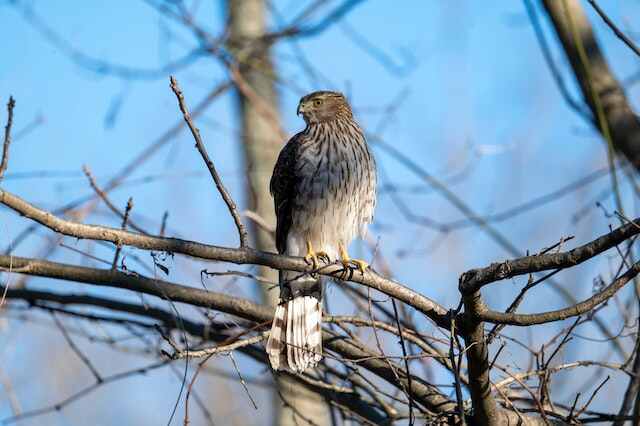
Which Hawks Migrate?
Several hawk species undertake remarkable migration journeys. Some notable migratory hawks include the Broad-winged Hawk, Swainson’s Hawk, and the Red-tailed Hawk.
These majestic birds travel long distances to find suitable breeding and wintering grounds. Migration allows them to follow food availability and favorable weather conditions.
| Hawk Species | Migration Destination |
|---|---|
| Broad-winged Hawk | South America (winter) |
| Swainson’s Hawk | South America (winter) |
| Red-tailed Hawk | Southern United States or Mexico (partial migration) |
| Rough-legged Hawk | Northern United States or Canada (winter) |
| Osprey | South America or Central America (winter) |
| Northern Harrier | Southern United States or Mexico (partial migration) |
| Cooper’s Hawk | Varies, some individuals migrate |
Please note that migration patterns can vary among individuals and populations, and these destinations are generalizations.
What is Migration and Why Do Hawks Migrate?
The phenomenon of migration in hawks is a complex behavior that is determined by a variety of environmental and biological factors, including the availability of food, changes in habitat, and reproductive needs.
Migration is defined as the seasonal movement of animals from one region to another, and it is a common behavior observed in many species of birds, including hawks.
The reasons for animal migration are varied but can include the need to find food, escape unfavorable weather conditions, or find a suitable mate.
Hawks, in particular, are known for their long-distance migration patterns, with some species traveling over 10,000 miles in a single season.
Red-tailed hawks, for example, are one of the most widespread and well-known hawk species in North America, and they migrate southward in the fall to escape the harsh winter conditions.
This migration behavior is a crucial aspect of their survival, as it ensures that they have access to food and suitable habitat throughout the year.
Red-Tailed Hawks
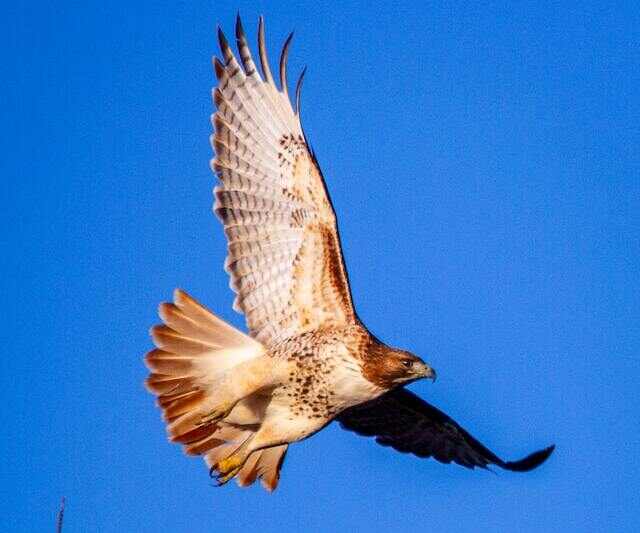
Red-tailed hawks are one of the most widespread and adaptable raptors in North America, but what factors influence their migration patterns?
Red-tailed hawks are known for their territorial behavior during the breeding season, but they become more social during migration.
Their migration patterns are primarily influenced by food availability and weather conditions. They generally begin their migration in September or October, heading south to their wintering grounds in Central and South America.
Red-tailed hawks are capable of covering long distances during migration, with some individuals traveling up to 3000 miles.
They tend to follow topographical features, such as mountain ranges or coastlines, utilizing updrafts to conserve energy during flight.
Despite their adaptability, red-tailed hawks, like other raptors, are facing increasing threats from habitat loss and human activities.
With that in mind, let’s explore the migration patterns of Swainson’s hawks.
Swainson’s Hawks
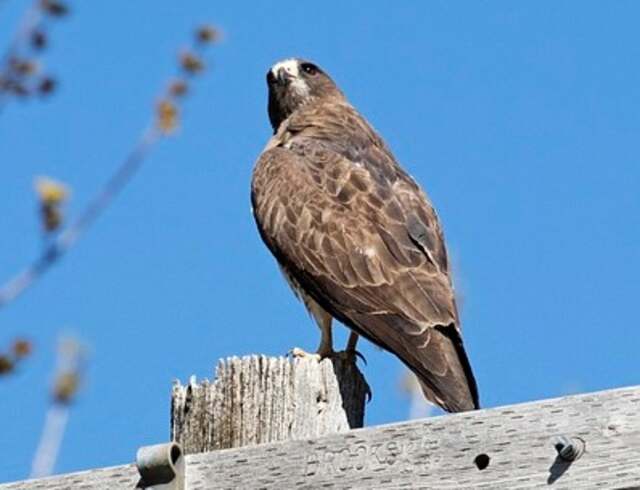
Adaptability plays a crucial role in the migratory patterns of Swainson’s hawks, a species known for their remarkable long-distance travel.
These hawks breed in North America and migrate to South America, covering a distance of up to 14,000 miles.
Their migration route is not fixed, and they can change their path depending on the availability of food and weather conditions.
Swainson’s hawks are also known for their conservation efforts, as they have been listed as a threatened species due to habitat loss and pesticide use.
Conservation efforts have been successful in increasing their breeding success, and their population has shown signs of recovery.
As we move on to the next subtopic about sharp-shinned hawks, it is important to note that their migratory patterns differ from those of Swainson’s hawks.
Sharp-Shinned Hawks
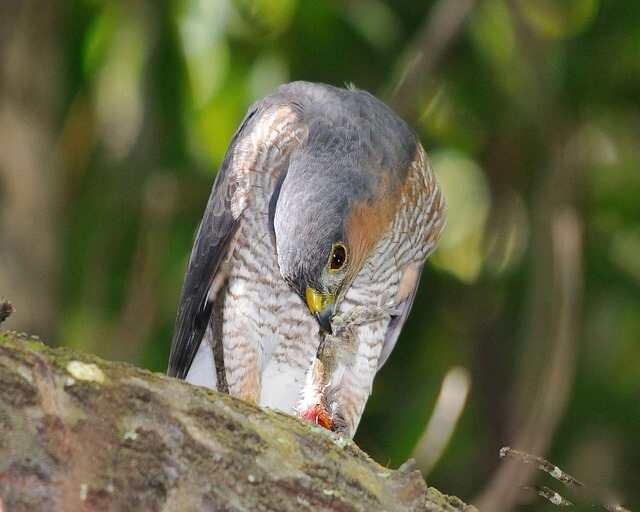
Sharp-shinned hawks are a small-bodied species of hawk that are known for their short-distance migration patterns.
These birds typically overwinter in the southern United States, Mexico, and Central America, where they can find suitable food sources and milder climates.
Like other migratory species, sharp-shinned hawks have specific overwintering habits that allow them to survive and thrive during the winter months.
Short-Distance Migration
Many hawks that engage in short-distance migration, such as the Cooper’s hawk, typically only travel a few hundred miles to reach their wintering grounds.
These hawks have established migration patterns that are influenced by environmental factors, such as food availability, weather conditions, and daylight hours.
They are able to navigate their way to their destination using landmarks and terrain they are familiar with. Although their migration distance is relatively short, it is still an impressive feat of endurance and survival.
As we explore the overwintering habits of these hawks, we will gain a better understanding of how they adapt to their new environment and thrive in the face of adversity.
Overwintering Habits
During the winter months, hawks face a variety of challenges as they adjust to new food sources, weather patterns, and social behaviors in their overwintering territories.
Some hawks prefer to stay in their breeding territories all year round, while others migrate to warmer climates.
Overwintering locations for hawks vary from dense forests to open grasslands to urban areas. They may also migrate to areas with abundant food sources such as water bodies, where they can hunt for fish.
Migratory routes taken by hawks during the winter season can also vary greatly depending on the species and their preferred overwintering locations.
Despite these challenges, hawks are resilient and adaptable birds that have been known to adjust to changing environments and find new ways to thrive.
Speaking of migratory routes, broad-winged hawks are known for their impressive migration patterns.
Broad-Winged Hawks
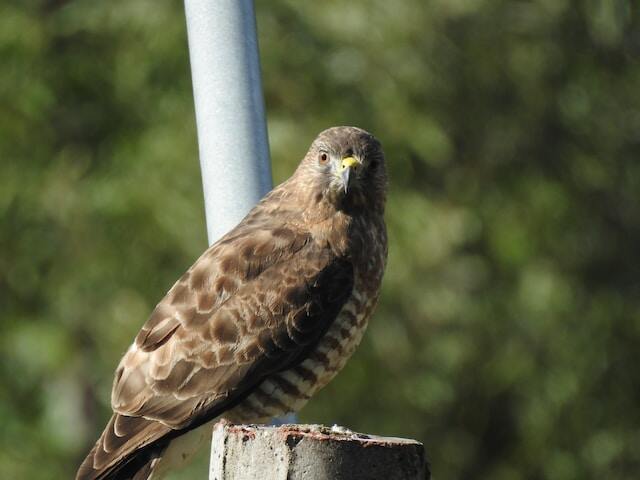
The Broad-Winged Hawk is a bird of prey that is known for its impressive mass migration, making it a fascinating subject for study.
These hawks are found in a variety of habitats throughout North America, from deciduous forests to open grasslands.
In terms of nesting behaviors, Broad-Winged Hawks are known for their tendency to build nests in the forks of trees, often near water sources.
Mass Migration
Significant numbers of hawks undertake an awe-inspiring mass migration every year, traveling thousands of miles to reach their wintering grounds.
This mass migration is a remarkable sight to behold, as hawks move in flocks that can number in the thousands.
To engage the audience, it’s important to note that this migration is a seasonal pattern that occurs with remarkable precision.
Hawks typically migrate in the fall, when the days are growing shorter and the temperatures are dropping.
During this time, they take advantage of thermal updrafts and favorable winds to make their journey south.
To ensure their survival, hawks must navigate a range of obstacles, including weather patterns, predators, and human-made obstacles such as buildings and power lines.
Despite these challenges, hawks continue to migrate in vast numbers every year, embodying the human desire for freedom and the call of the wild.
As we transition to the subsequent section about habitat and nesting behaviors, it’s clear that hawks’ mass migration is just one aspect of their complex and fascinating lives.
Habitat and Nesting Behaviors
After discussing the phenomenon of mass migration, we can now delve into the habitat and nesting behaviors of hawks, particularly those that migrate.
A hawk’s habitat is crucial for its nesting success. In recent years, habitat preservation has become a critical issue for the conservation of migratory hawks.
Hawks need sufficient nesting sites that offer protection and food for their young. Their nesting behaviors also vary, with some species preferring to nest in tall trees while others prefer cliffs.
The success of nesting is also influenced by the availability of prey in the surrounding area.
By preserving their habitats, we can ensure that migratory hawks have a better chance of surviving and reproducing.
Now, let’s shift our focus to one specific species of hawk, the Cooper’s hawk, and examine its unique characteristics and behaviors.
Cooper’s Hawks

Cooper’s Hawks are a medium-sized bird of prey found throughout North America.
These hawks are known for their partial migration behavior, with some individuals staying in their breeding range year-round and others migrating to wintering grounds.
Their year-round distribution is influenced by factors such as prey availability, habitat suitability, and climate.
Partial Migration
Partial migration is a common phenomenon among hawk species, where only a portion of the population migrates while the rest remain in their breeding range.
This behavior is often influenced by ecological factors such as food availability, climate conditions, and competition for resources.
For example, in the Northern Harrier species, females tend to migrate further south than males, likely due to differences in body size and energy requirements.
Similarly, in the Red-tailed Hawk, the western population is more likely to exhibit partial migration compared to the eastern population, possibly due to differences in prey availability.
It is important to note that partial migration is not a fixed behavior and can vary between individuals and populations.
The table below provides examples of hawk species that exhibit partial migration and those that do not, emphasizing the variability in migration patterns among different species.
Understanding these patterns can help us better conserve and manage hawk populations in their breeding and wintering ranges.
In contrast to partial migration, some hawk species have a year-round distribution across their range, as we will explore in the next section.
| Partial Migration | No Partial Migration |
|---|---|
| Northern Harrier | Bald Eagle |
| Red-tailed Hawk | Osprey |
| Sharp-shinned Hawk | Golden Eagle |
Overall, migration and distribution patterns in hawks are complex and influenced by a variety of ecological factors.
Year-Round Distribution
In contrast to partial migration, some hawks have a year-round distribution. These hawks do not migrate at all and can be found in the same area throughout the year.
Patterns of year-round distribution are influenced by a variety of factors, including habitat availability, prey abundance, and competition with other species.
Understanding these factors can help conservation efforts and inform management strategies for these non-migratory species.
Moving forward, it’s important to consider the distribution and behavior of all hawks, including accipiters, which we will explore in the next section.
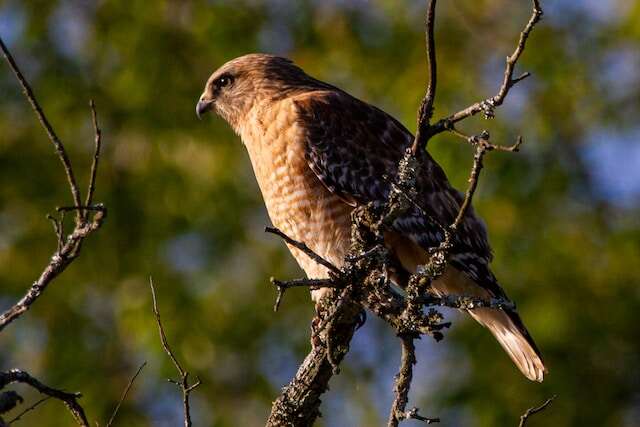
Accipiters
Accipiters are a genus of hawks that are known for their short, rounded wings and long tails, which allow them to maneuver easily through dense forests and capture prey on the wing. They are classified as forest hawks and are found all over the world except in Antarctica.
These birds of prey rely on their agility to catch birds and small mammals in flight, using their sharp talons to grab their prey and their hooked beaks to tear flesh.
Their hunting techniques include surprise attacks, quick dives, and agile turns. Accipiters have a distinctive physical characteristic of having a very long middle toe, which is an adaptation for holding onto prey.
Understanding the migration patterns of Accipiters is important for conservation efforts and to gain a better understanding of the ecological role these birds play in their respective ecosystems.
Identifying which species of Accipiters migrate can help determine which regions need to be protected to ensure their survival.
Frequently Asked Questions
How do hawks know where to migrate?
Hawks use various navigation techniques, including celestial cues and magnetic fields, to determine their migration routes. They also rely on environmental cues such as wind patterns and topography. This innate ability to navigate is an essential adaptation for their survival.
How long do hawks typically live?
The average lifespan of hawks varies by species, with some living up to 20 years. Breeding habits also differ, with some species breeding annually and others every other year. Hawks are known for their freedom and ability to soar through the skies.
Do all hawks migrate every year?
Recent studies show that hawk migration patterns are changing due to climate change impact. While not all hawks migrate every year, many species do, traveling thousands of miles to their wintering grounds in search of food and better conditions.
What threats do migrating hawks face?
Migrating hawks face various threats, including predator avoidance and habitat loss. These challenges can negatively impact their survival and migration patterns. It is crucial to implement conservation measures to ensure the long-term survival of these majestic birds.
How can individuals help protect migrating hawks?
Protecting migrating hawks requires conservation efforts and volunteer opportunities. Individuals can engage in habitat restoration, support research, and advocate for hawk-friendly practices. As guardians of the skies, we can ensure these birds of prey continue to soar towards freedom.
Conclusion
Migration is a natural phenomenon observed in many bird species, including hawks. Hawks migrate to find better food sources, avoid harsh weather conditions, and to breed in more favorable environments.
The migration patterns of hawks vary depending on the species, with some migrating long distances across continents while others remain within the same region.
Red-tailed hawks are among the most commonly observed migratory hawks in North America. They are known to travel long distances, with some individuals covering up to 3000 miles during migration.
Swainson’s hawks, on the other hand, undertake one of the longest migrations of any North American raptor, covering a distance of over 6000 miles from South America to North America.
Sharp-shinned hawks are small migratory hawks that breed in the boreal forests of Canada and Alaska and migrate to the southern parts of North America and Central America during the winter.
Broad-winged hawks are another migratory species that travel in large groups, known as kettles, during migration. Cooper’s hawks are also migratory, but their migration patterns are less well understood.
Accipiters are a group of hawks that include the sharp-shinned and Cooper’s hawks. These hawks are known for their agility and speed, and their migration patterns are closely tied to the availability of food.
Accipiters that reside in the northern parts of North America tend to migrate south during the winter in search of prey.
In conclusion, understanding the migration patterns of hawks is crucial for their conservation and management.
The migration of hawks is an incredible feat that requires an understanding of their biology and behavior.
One interesting statistic that highlights the importance of hawk migration is that over 4 million birds of prey are estimated to be killed each year during migration by human activities such as hunting, habitat loss, and collisions with buildings and power lines.
By studying the migration patterns of hawks and taking steps to mitigate these threats, we can ensure the survival of these magnificent birds for generations to come.

